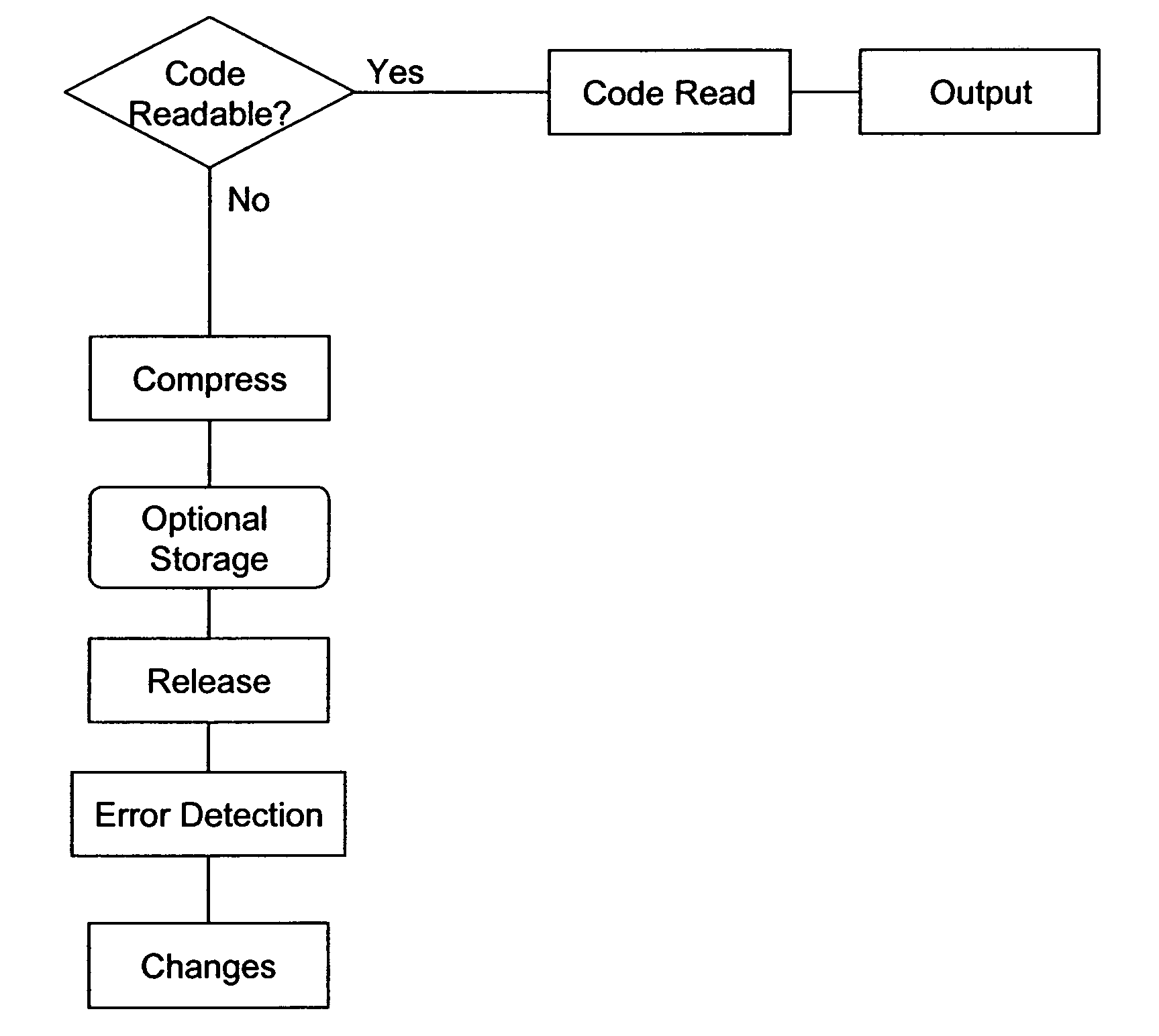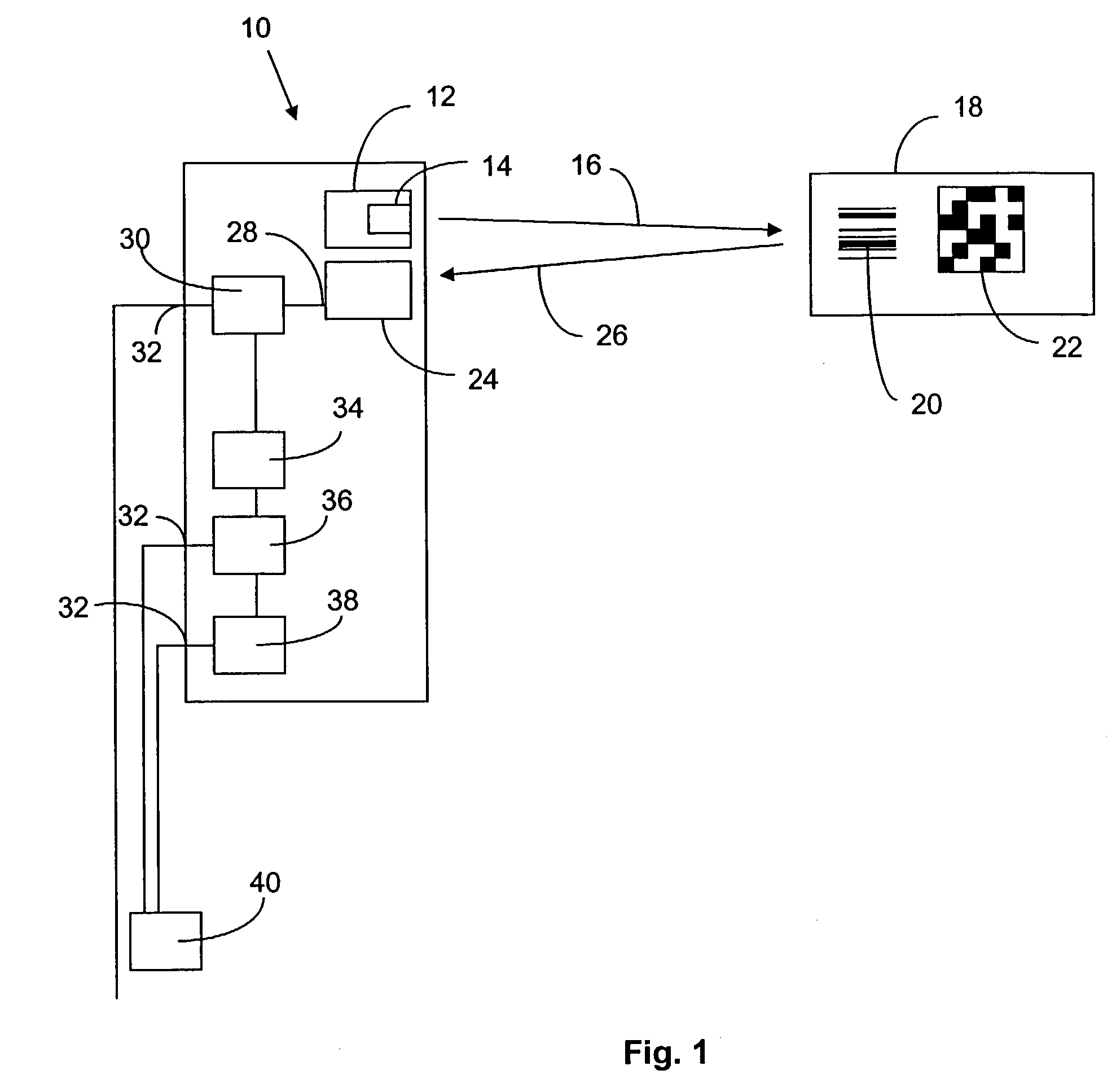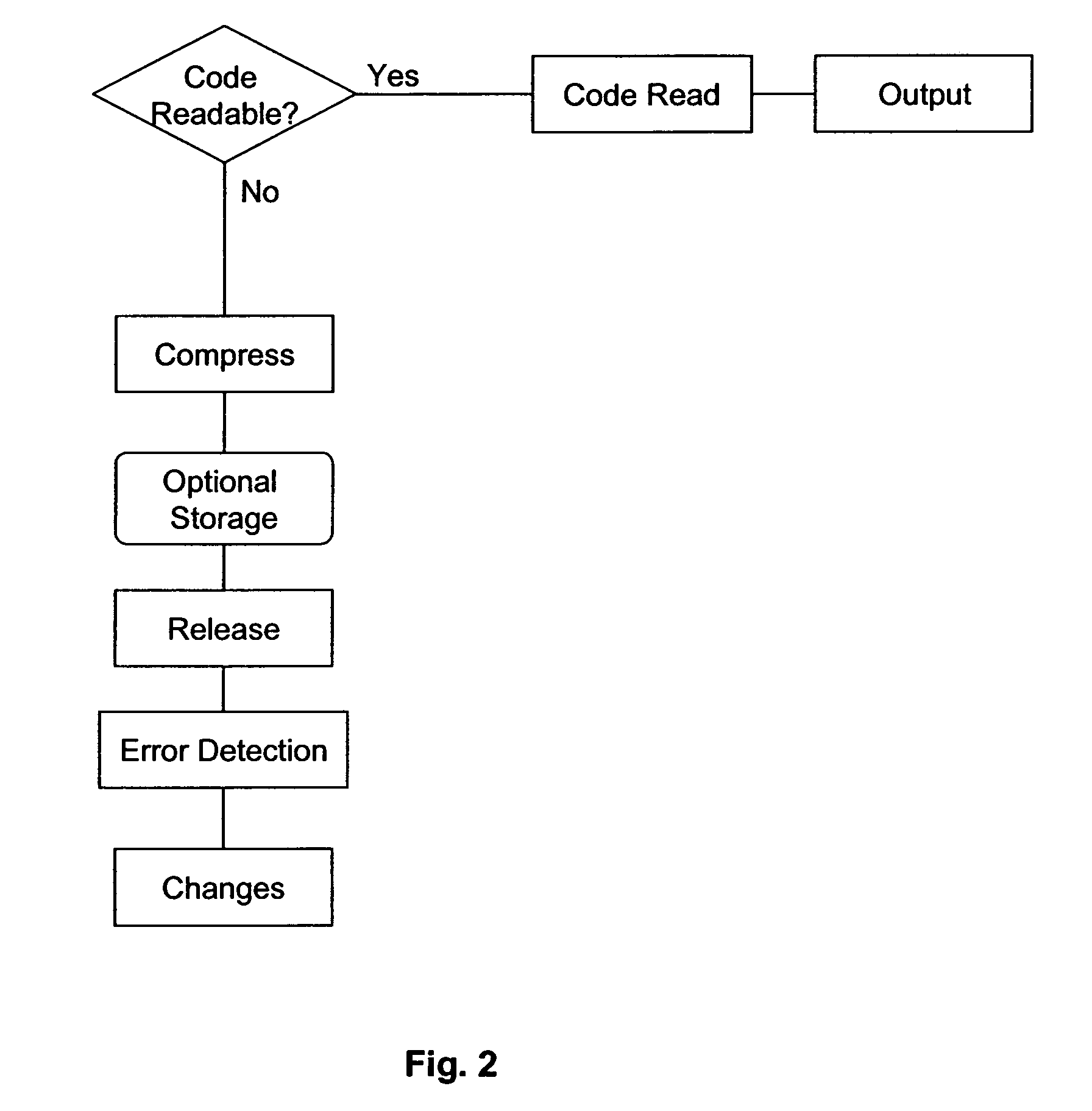Method for operating optical sensors
- Summary
- Abstract
- Description
- Claims
- Application Information
AI Technical Summary
Benefits of technology
Problems solved by technology
Method used
Image
Examples
Embodiment Construction
[0026]Referring to FIG. 1, a code reader 10 constructed in accordance with the present invention has a light emitter 12 with a light source 14 that emits a light beam 16. Light beam 16 illuminates an object 18 that carries a code 20 or 22. The code can be a one-dimensional bar code schematically illustrated at 20 or a two-dimensional code 22. Other codes, such as color codes, for example, can also be employed. To completely cover code 20 or 22 with light beam 16, code reader 10 has a light deflecting device (not separately shown) which scans the light beam over codes 20 or 22.
[0027]Light beam 16 can be linearly focused on object 18 so that, for one-dimensional codes 20, it illuminates the entire length of the code or, for two-dimensional code 20, so that the code is completely scanned by line-shaped light beam 16.
[0028]Code reader 10 further has a light receptor 24 which receives light 26 reflected by and / or returned from object 18. Light receptor 24 typically has its own optics. Li...
PUM
 Login to View More
Login to View More Abstract
Description
Claims
Application Information
 Login to View More
Login to View More - R&D
- Intellectual Property
- Life Sciences
- Materials
- Tech Scout
- Unparalleled Data Quality
- Higher Quality Content
- 60% Fewer Hallucinations
Browse by: Latest US Patents, China's latest patents, Technical Efficacy Thesaurus, Application Domain, Technology Topic, Popular Technical Reports.
© 2025 PatSnap. All rights reserved.Legal|Privacy policy|Modern Slavery Act Transparency Statement|Sitemap|About US| Contact US: help@patsnap.com



